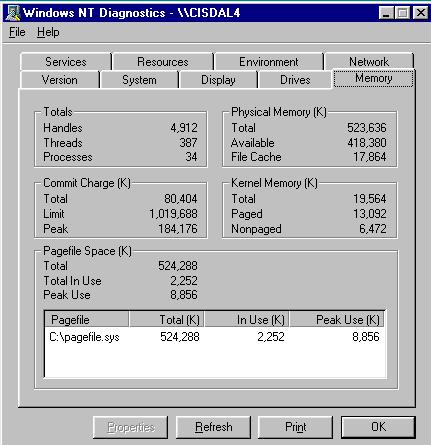This article will tell what physical memory is.
Physical memory is relative to logical memory. It refers to gaining memory space through a physical memory stick, while logical memory means using an area of a hard disk as memory. The main role of memory is to provide temporary storage for operating system and various programs when the computer is operating.
Common physical memory storage specifications are 256M, 512M, 1G, 2G, and so on. With the development of computer hardware, 4G, 8G and even larger capacity storage specifications have emerged. Virtual memory can be used to replace physical memory when it is inadequate. In the application, physical memory is literally the capacity size of the memory stick plugged in the mainboard memory slot. When checking the computer configuration, we should mainly notice the physical memory.

- Name: physical memory
- Meaning: the capacity size of memory stick
- Category: computer configuration
- Nature: a window in which data and code run
- Comparison: virtual memory
- Main configuration style: 4G or above
Concept
Description in application
Physical memory is one of the most important resources of computer. Windows memory manager is responsible for allocating memory to operating process, devices driver and operating system. As the amount of data and code visited by most systems is much more than that of physical memory, essentially speaking, physical memory is the window in which code and data run. So, the memory capacity has an influence on performance, because if the code or data needed in process or operating system don’t exist, the memory manager should read them from the disk.
Recommendation: You might be interested in this post: How to Fix: 100% Disk Usage on Windows 10 Task Manager.
Description in CPU
Physical memory is the memory space which CPU address lines can seek directly. For example, 8086 only has 20 address lines, thus, the addressing space is 1MB. And we can say 8086 can support 1 MB physical memory. Although a memory stick of 128M has been installed on the mainboard, 8086 owns 1M physical memory space. Similarly, 32-bit CPU over 386 can support the maximum physical memory of 4GB.
The differences between virtual memory and physical memory: opposite to physical memory, virtual memory is the memory space that needs to be got from hard disk virtually according to system requirement. It is a computer system memory management technology, which belongs to computer program. While physical memory is hardware. When you are dealing with large program sometimes, the system memory may be not enough. Then, the hard disk will be used as memory sometimes to exchange data and to be the cache area. But the processing speed of physical memory is over 30 times faster than that of virtual memory.
Memory limitations
In 64-bit Windows client, different SKUs support different memory size. The memory support of Windows XP Starter is the lowest, which is only 512MB; while the memory support of Windows Vista Ultimate is the highest, which is up to 128GB. But all versions of 32-bit Windows clients SKU, including Windows Vista, Windows XP and Windows 2000 Professional support at most 4GB physical memory. Standard memory management mode of X86 can support up to 4GB physical address visit. In early times, people don’t need to consider when client support is over 4GB. This is because few computers have so large memory capacity, even the servers.
However, in the process of Windows XP SP2 development, it can be foreseen that the computer will be equipped with memory over 4GB. So, Windows product group has conducted many tests over the Windows XP computer more than 4GB. Windows XP SP2 also supports physical address extension (PAE) function, which is supposed to implement non-execution (NE) protection in hardware as it is a necessary condition for data execution prevention (DEP). And this function also supports memory over 4GB.
Engineers of Windows product group have found many test computer may crash, hang or fail to start due to some device driver. The prime reason is the graphic card or sound card on the client computer (not server), and the situation of memory over 4GB was not taken into account when the device driver was written. Therefore, these device drivers will cut that part of address and it will lead to memory conflicts and other side effects. However, server is often equipped with more conventional hardware, and the device driver is more simple and stable. This is because we have little chance to encounter such problems. Since client device driver has these problems, Windows client SKU is forced to ignore the physical memory which is over 4GB, even if it can be addressed theoretically.